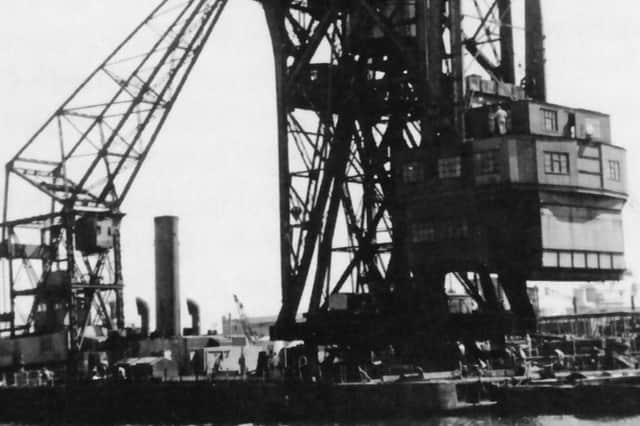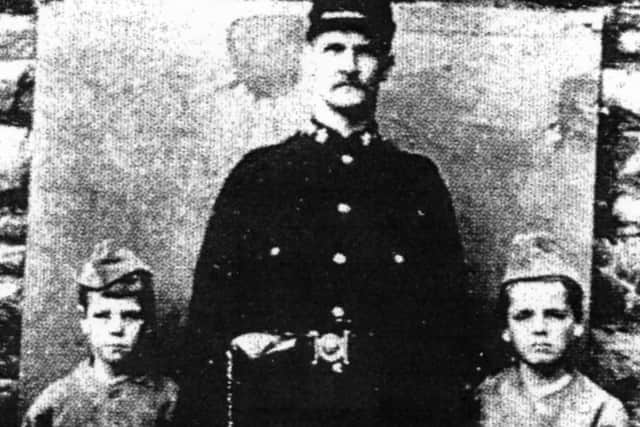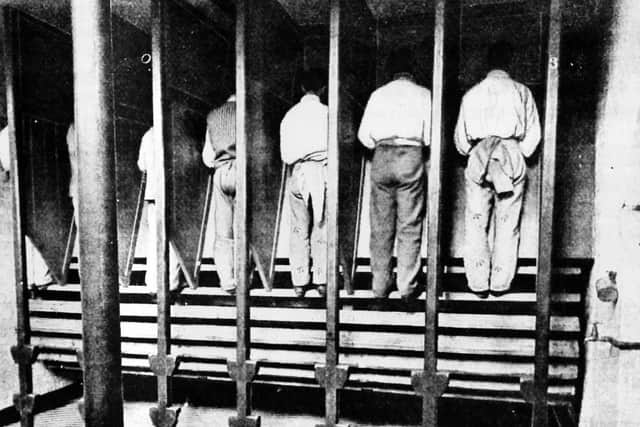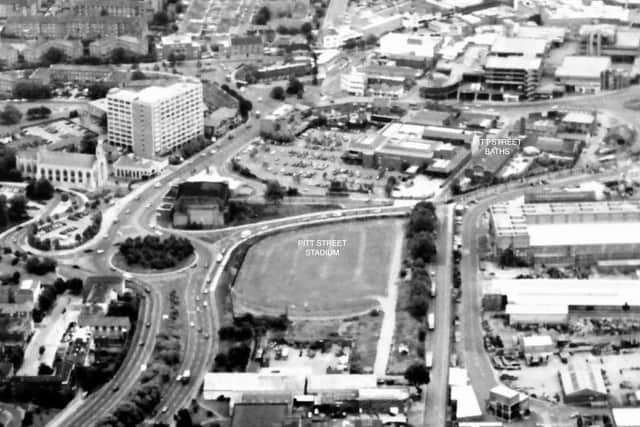Fine German engineering was '˜captured' for Portsmouth after First World War '“ Nostalgia


This fantastic structure, in use in Portsmouth Dockyard until the late 1960s was obtained from Germany as a result of First World War reparations. It could lift 200 tons, although in a test lift 267 tons were raised.
The whole structure weighed in at 4,000 tons and was electrically operated. Those Germans were a clever bunch.
Advertisement
Hide AdAdvertisement
Hide AdIs there anyone surviving who operated the crane? If so, I'd love to hear from you.


'¢Â You may think that sentences for crimes committed in this day and age are somewhat lenient, but of course it was not always like this.Â
Keith Sandy sent me this somewhat faded picture of two lads, aged about 10, who appear manacled in 1899 at Kingston Prison, Portsmouth. They were sentenced to five days' hard labour in 1899 for throwing a '˜mortar' at a door.
Now, to me, a mortar is an explosive device and I am not too sure if it was the same then. Perhaps it was a firework they had thrown. How on earth would two young boys obtain an explosive device? Whatever, I am sure these boys never did anything wrong again in their lives.
Advertisement
Hide AdAdvertisement
Hide AdIf you want to know how bad living was in the Victorian age, I suggest you read Paul Newell's marvellous book Shocking Tales From Victorian Portsmouth. Some of the stories are, to be honest, quite horrific.


If you were jailed and sentenced to hard labour then you would more than likely spend time on what we now call a tread mill. In fact, Paul tells us, the term should be tread '˜wheel'.
The wheel, seen here being operated in Kingston prison, was geared to millstones which ground corn into flour and which, in turn, supplied several prisons.
With a full complement, the wheel could accommodate 40 men but as there were often fewer there could be great difficulty turning the wheel with a diminishing supply of grain. I wonder if the location of the wheel can still be seen in the former prison?
Advertisement
Hide AdAdvertisement
Hide Ad'¢ It's amazing to think that this aerial view was taken just 27 years ago in 1991.


In the centre is the Royal Navy football stadium Pitt Street and above that are Pitt Street Baths and the naval gymnasium. The photo comes from Chris Brunnen's Portsmouth '“ An Aerial View through Time.
To the left is All Saints' Church while opposite it is the former ABC cinema awaiting demolition. The site of the stadium is now a retail park.